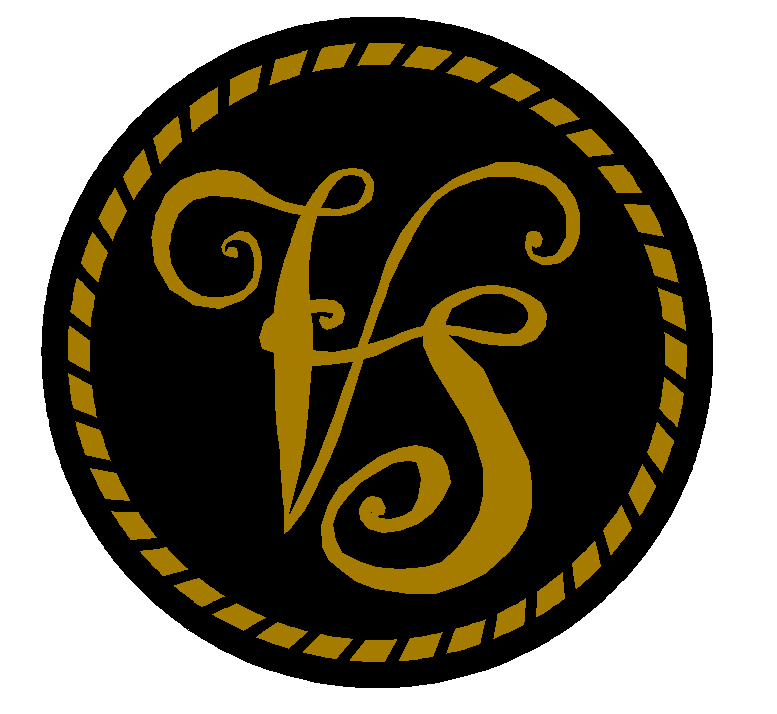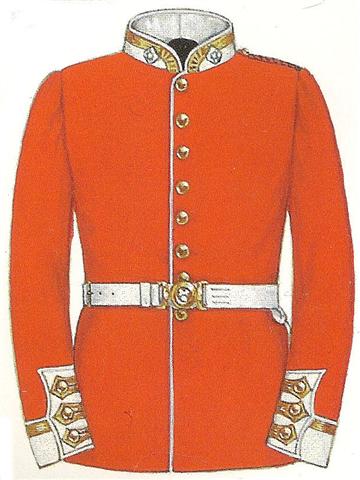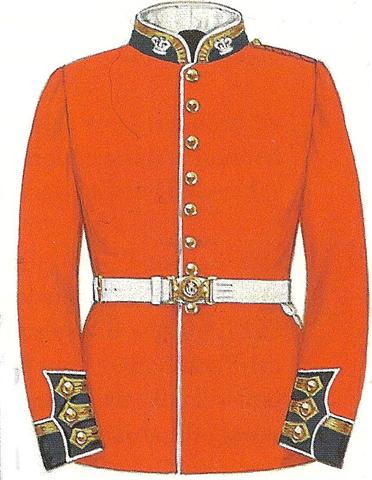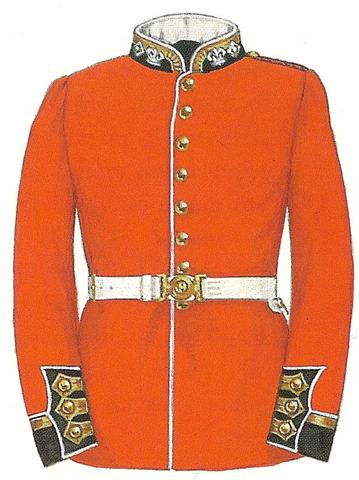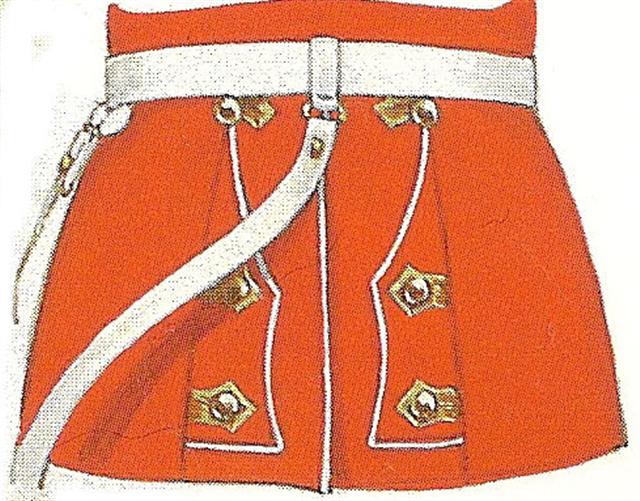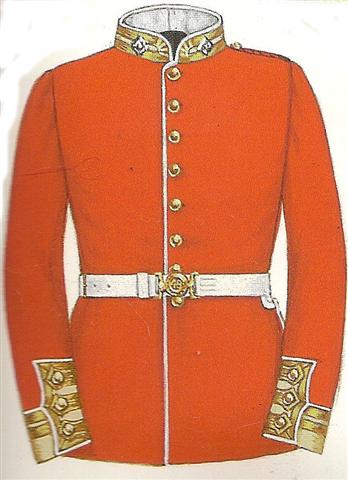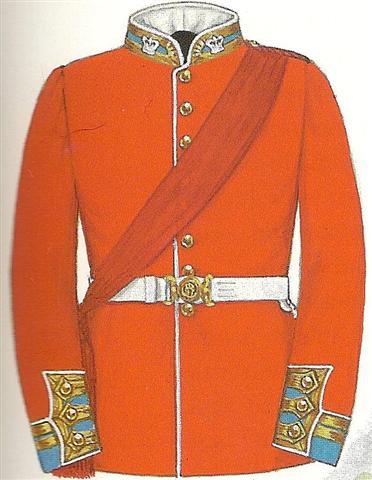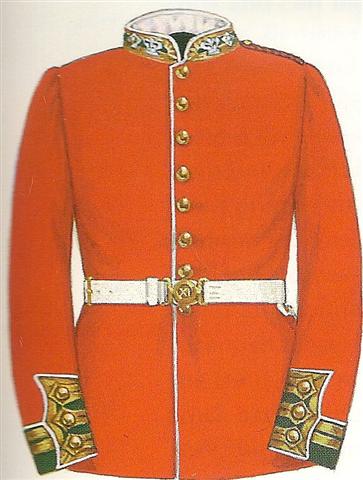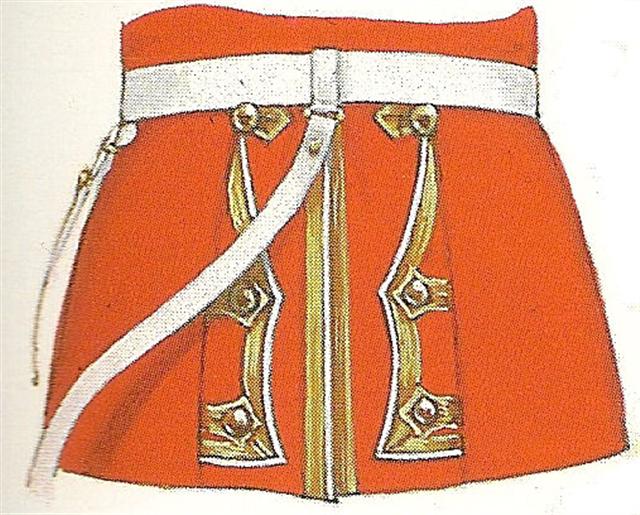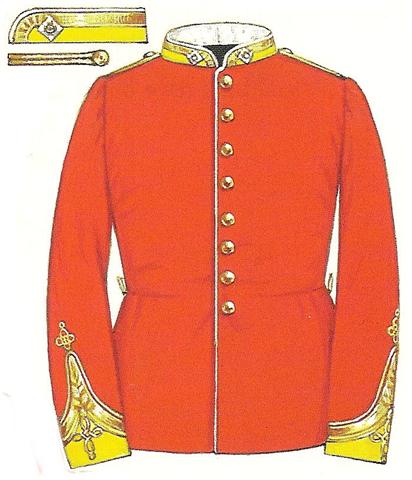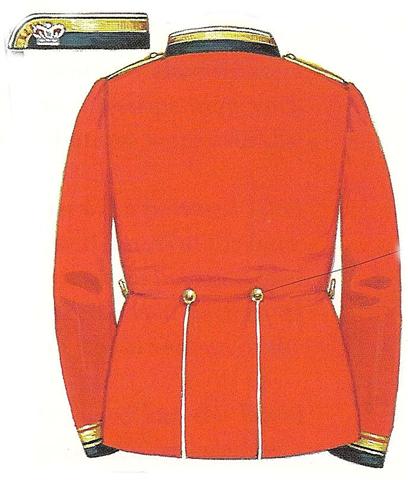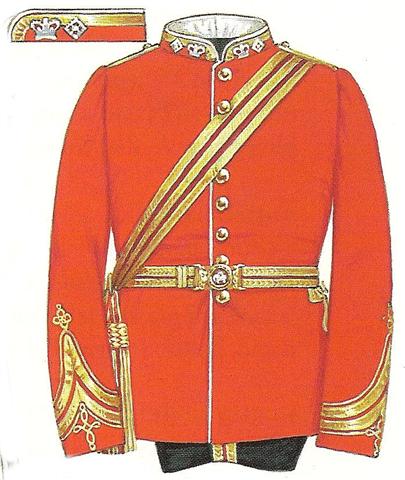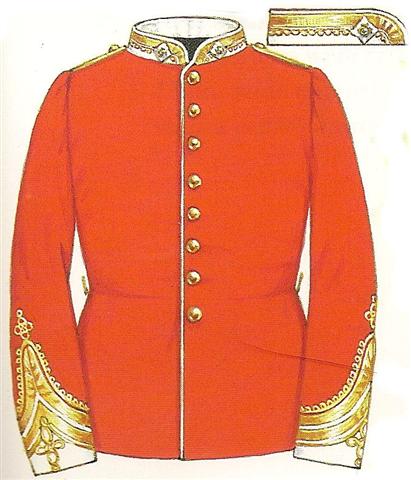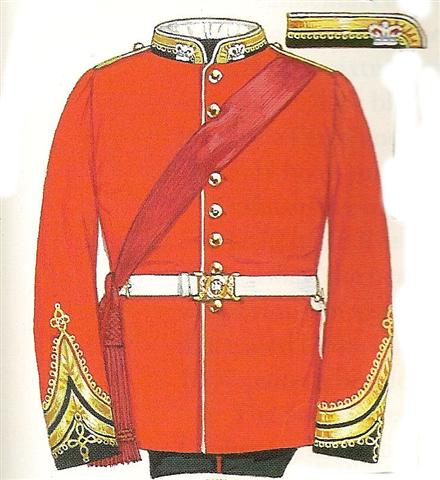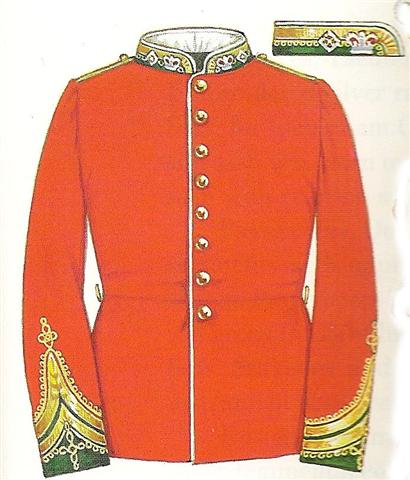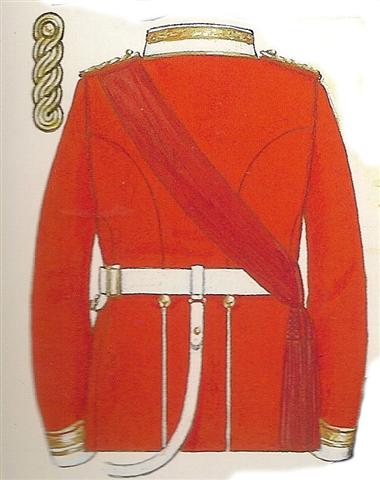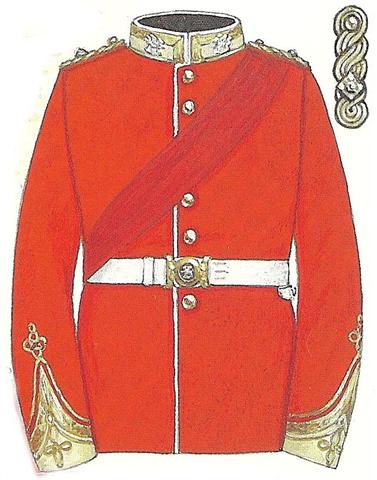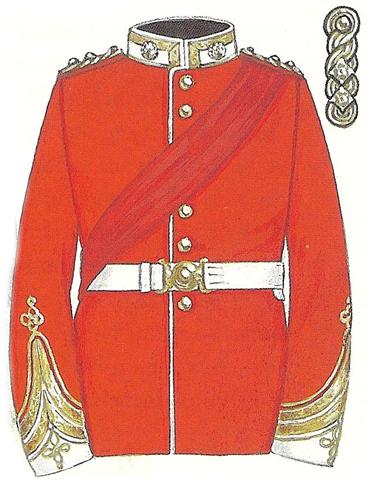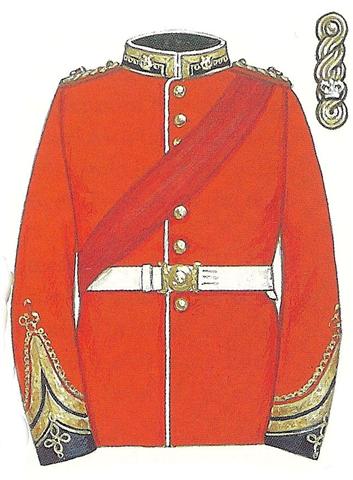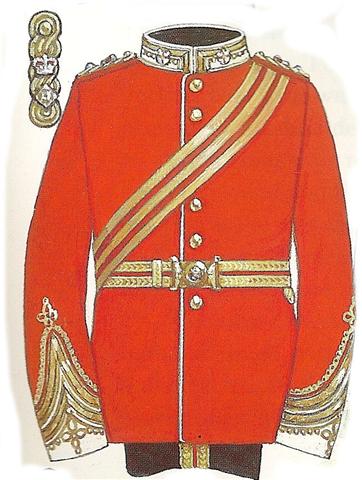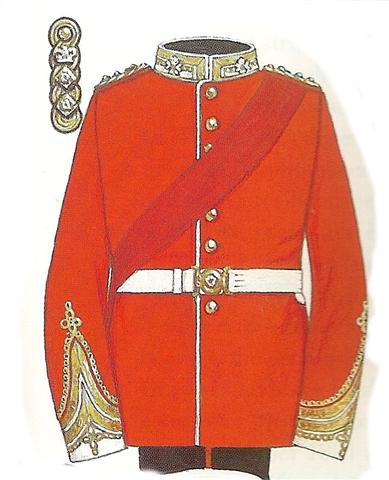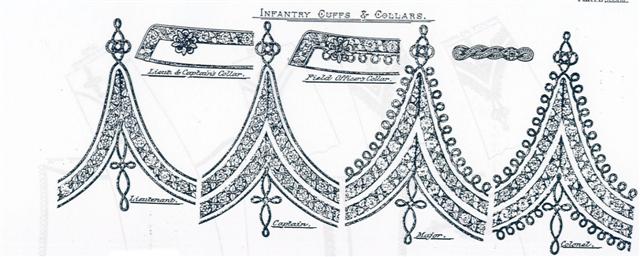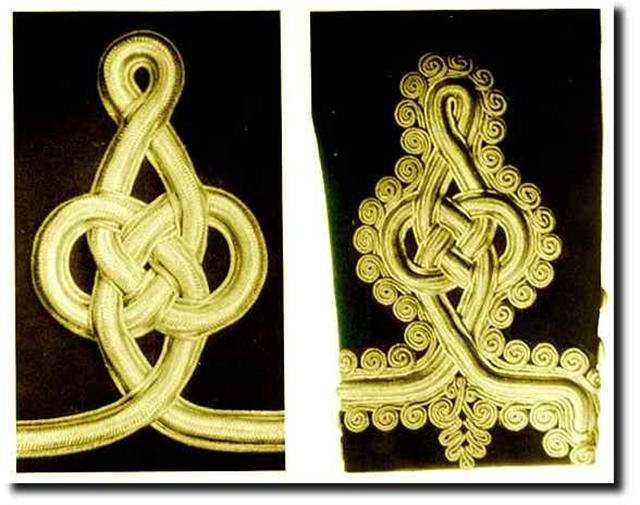1837-1901 |
Steve's Uniform Pages |
|||||||||||||||||||||||||||||||||||||||||||||||||||||||||
|
Ranks and Insignia for Infantry Officers through out the Victorian Era |
|||||||||||||||||||||||||||||||||||||||||||||||||||||||||
|
|
British Army officer rank insignia - Origins From medieval times, devices such as pennants and shield patterns through to the full development of heraldry had been used to identify very senior ranks such as the monarch or other leaders of armies. With no nationally organised army, such practises were largely a matter of personal choice and contemporary protocol. More formal military structures evolved out of such developments as Cromwell's New Model Army formed in 1645. In the 17th and 18th centuries, rank was generally denoted by the quantity of lace and through other decoration used on uniforms. While a crossed sword and baton device was already used by generals by 1800, the different grades of general were only distinguished by the grouping of the buttons on their coats until the Crimean War. The following images have been copied from the book 'The Thin Red Line' with the kind Permission of Bryan Fosten. 1856-1867
1868-1880
1881-1902
Ranks and Insignia for Engineer and Artillery Officers through out the Victorian Era
The 1902 change gave Second Lieutenant's a single star and the insignia of Lieutenants and Captains were increased to two and three stars. In addition to the shoulder badges, officers' ranks were also reflected in the amount and pattern of gold lace worn on the cuffs of the full-dress tunic. From 1902, a complex system of markings with bars and loops in thin drab braid above the cuff (known irreverently as the asparagus bed) was used at first, but this was replaced in the same year by a combination of narrow rings of worsted braid around the cuff, with the full-dress style shoulder badges on a three-pointed cuff flap. Based on equivalent naval ranks, Colonels had four rings of braid, Lieutenant-Colonels and majors three, captains two and subalterns one. In the case of Scottish regiments, the rings were around the top of the gauntlet-style cuff and the badges on the cuff itself. General officers still wore their badges on the shoulder strap. During World War I, some officers took to wearing similar jackets to the men, with the rank badges on the shoulder, as the cuff badges made them too conspicuous to snipers. This practice was frowned on outside the trenches but was given official sanction in 1917 as an optional alternative, being made permanent in 1920, when the cuff badges were abolished. Brigadier-Generals wore a crossed sword and baton symbol on its own. In 1922 the rank was replaced with Colonel-Commandant, a title that reflected the role more accurately, but which many considered to be inappropriate in a British context. From 1928 the latter was replaced with the rank of Brigadier with the rank insignia used to this day. Rank Origins: Captain-General: (ca. 17th century) a full General Serjeant-Major-General: (ca. 17th century) shortened to Major General Brigadier-General: replaced by Colonel-Commandant in 1922 Colonel-Commandant: replaced by Brigadier in 1928 Serjeant-Major: (ca. 17th century) shortened to Major Captain-Lieutenant: (ca. 17th & 18th century) the lieutenant of the first company in a regiment, whose captaincy was held by the regimental colonel. On promotion to full captain, the period in this rank was treated as having been a full captain for pay and pension purposes, since he effectively commanded the company Ensign: lowest subaltern rank in infantry regiments; replaced in 1871 by Second Lieutenant, but still used in some Guards regiments. Cornet: cavalry equivalent of ensign replaced in 1871 by Second Lieutenant, but still used in some cavalry regiments.
Today, when in combat dress (dress state 95) the 'rank slide' is worn on the centre of the chest, rather than on the shoulder. Current UK Officers will wear the following badges on their uniform to signify their rank: General (Gen)- Crown, star and crossed sword with baton. Lieutenant General (LT Gen) - Crown and sword with a baton. Major General (Maj Gen) - General star and sword with a baton. Brigadier (Brig) - Crown and three stars. Colonel (Col) - Crown and two stars. Lieutenant Colonel (Lt Col) - Crown and star. Major (Maj) - Crown. Captain (Capt) - 3 stars. Lieutenant (Lt) - 2 stars. Lieutenant (2 Lt) - 1 star. |
|
||||||||||||||||||||||||||||||||||||||||||||||||||||||||
|
|
|
||||||||||||||||||||||||||||||||||||||||||||||||||||||||
